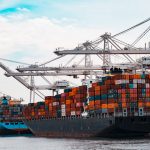![]() Scope of Application: The ETS will be extended to cover the shipping sector, specifically targeting large vessels with a gross tonnage exceeding 5000. This means that shipping companies operating within the European Union will need to account for and manage their greenhouse gas emissions.
Scope of Application: The ETS will be extended to cover the shipping sector, specifically targeting large vessels with a gross tonnage exceeding 5000. This means that shipping companies operating within the European Union will need to account for and manage their greenhouse gas emissions.
![]() Emission Allowances: Companies operating in the shipping sector will need to secure emission allowances that correspond to their greenhouse gas emissions. These allowances can be obtained through the EU carbon market or via trade with other enterprises. This is meant to incentivize emissions reduction efforts.
Emission Allowances: Companies operating in the shipping sector will need to secure emission allowances that correspond to their greenhouse gas emissions. These allowances can be obtained through the EU carbon market or via trade with other enterprises. This is meant to incentivize emissions reduction efforts.
![]() Penalties for Non-compliance: Failure to meet the emission allowances will result in significant financial penalties. This serves as a strong motivator for shipping companies to stay within their allocated emissions limits.
Penalties for Non-compliance: Failure to meet the emission allowances will result in significant financial penalties. This serves as a strong motivator for shipping companies to stay within their allocated emissions limits.
![]() 4Progressive Emission Reduction: The emission cap will be reduced year by year in alignment with the EU’s climate objectives. This means that shipping companies will need to continually reduce their emissions to comply with stricter limits.
4Progressive Emission Reduction: The emission cap will be reduced year by year in alignment with the EU’s climate objectives. This means that shipping companies will need to continually reduce their emissions to comply with stricter limits.
![]() 5. Coverage Expansion: The application of the ETS in the shipping sector will start by covering GHG emissions from intra-European voyages and 50% of voyages commencing or concluding in Europe. This staged implementation will ultimately lead to complete coverage by 2026.
5. Coverage Expansion: The application of the ETS in the shipping sector will start by covering GHG emissions from intra-European voyages and 50% of voyages commencing or concluding in Europe. This staged implementation will ultimately lead to complete coverage by 2026.
![]() 6. Cost Implications: The transformation and increased coverage of the ETS in the shipping sector will result in a gradual uptick in surcharges. The projected industry-wide cost implications are estimated to range between USD 9-10 billion. These costs may be passed on to consumers or absorbed by the shipping companies, affecting their competitiveness.
6. Cost Implications: The transformation and increased coverage of the ETS in the shipping sector will result in a gradual uptick in surcharges. The projected industry-wide cost implications are estimated to range between USD 9-10 billion. These costs may be passed on to consumers or absorbed by the shipping companies, affecting their competitiveness.
![]() 7. Environmental Impact: The primary goal of this expansion is to reduce greenhouse gas emissions from the shipping sector, contributing to the EU’s broader climate objectives. As emissions are reduced over time, it will have a positive impact on the environment and contribute to mitigating climate change.
7. Environmental Impact: The primary goal of this expansion is to reduce greenhouse gas emissions from the shipping sector, contributing to the EU’s broader climate objectives. As emissions are reduced over time, it will have a positive impact on the environment and contribute to mitigating climate change.
![]() Compliance and Adaptation: Shipping companies will need to adapt their operations, invest in cleaner technologies, and explore more sustainable practices to comply with the ETS. This could lead to innovation in the sector as companies seek to reduce their emissions and operating costs.
Compliance and Adaptation: Shipping companies will need to adapt their operations, invest in cleaner technologies, and explore more sustainable practices to comply with the ETS. This could lead to innovation in the sector as companies seek to reduce their emissions and operating costs.
![]() International Implications: This move by the EU could encourage other regions and countries to consider similar measures. It may also lead to international discussions and agreements on global efforts to reduce emissions from international shipping.
International Implications: This move by the EU could encourage other regions and countries to consider similar measures. It may also lead to international discussions and agreements on global efforts to reduce emissions from international shipping.




